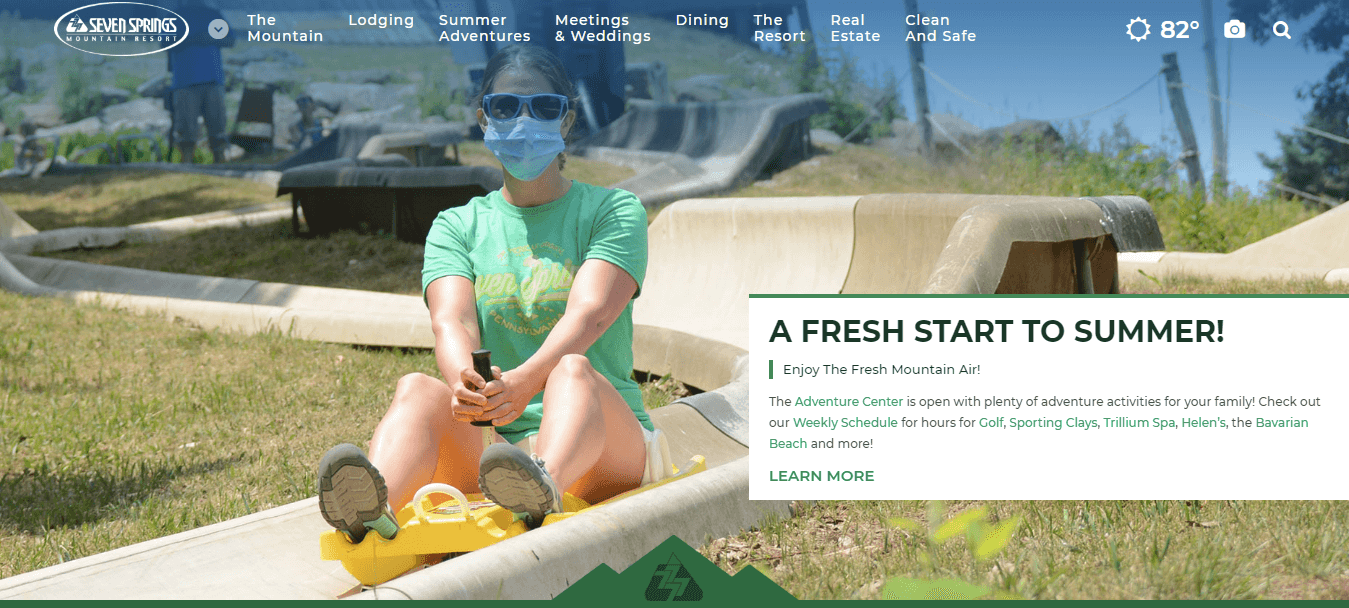Perspectives
The deeper value of simplicity in a year like 2020.


BLANCHARD
I love simplicity.
Whether you’ve read SlopeFillers for a decade or a week, this is likely obvious to you. Out of the last 10 posts, nearly all have highlighted something that was simple in either concept of execution.
Which brings me to the year 2020. A year of smaller teams, constant adaptation, and uncertain futures.
What does simplicity have to do with a year like this one? In my book, everything.
Four Perks
The irony in my love of simplicity is that I sometimes – well, often – struggle to achieve it in practice. Yeah, SlopeFillers is simple. But running marketing for Inntopia and trying to tell the story of three lines of business and how those relate to a handful of verticals? All the while keeping tabs on new features, client success stories, and changing market trends?
Yeah, simplicity can be elusive.
But the last 9 months have seen me make significant headway toward a state of simplicity I’ve wanted, and needed, for a while. And as I’ve gotten closer? A few really valuable perks – that are especially useful in 2020 – have cropped up.
1) Better Work
This is a big one. When I don’t have as many details to manage, I can focus on what I’m doing and do that one thing better instead of 10 things in a “meh” sort of way. Simplicity tends to lead to quality.
2) Easier Pivots
When you’re working simpler materials, it’s easier to create something new as needed. If your marketing is more like a set of legos than a intricate wood carving, what you lack in polish you make up for in the ability to quickly adapt. Not a bad thing to be able to do in 2020.
3) More Accurate Measurement
Another big one for me. When the execution is simpler, when there aren’t as many lines between boxes in your flow chart, I’ve found it’s often easier to tell which box is work and which isn’t. And to the pivot point above, if a box isn’t working, you can swap it out for another.
4) Time, People, Skills
This are the more obvious ones, but they’re absolutely true. Simple campaigns are easier to execute when you’re a small team with limited time and/or skills. Go big, and you’ll need help and money to make it happen. Keep it simple, and you can move quickly in-house.
Por Exemplu
I think websites are the perfect example.
If your website’s layout is extremely prescriptive about how every pixel fits together, it’s much harder to add new blocks and features or nav elements when things arise (which they always do). The only reason Seven Springs could add a Clean and Safe item to their nav is because they had room in their nav in the first place.

If that nav is designed for exactly 8 elements because the designer labored over perfect visual balance between the length of words and their 1400px breakpoint and their belief there shouldn’t be gaps and…? Well, you’re stuck.
Keep it simple.
Start Simple, Stay Simple
In my experience, it’s really easy to start simple. To have an idea in your head that’s pure and succinct.
It’s much harder to keep it simple as you get it out of your head, show it to others, and try to account for others’ needs and nuance and opinions and expectations. When folks start asking the “What about…” questions.
But that’s really where those wins come from. It’s keeping that idea as simple as possible and learning to know what to say “no” along the way.
About Gregg & SlopeFillers
I've had more first-time visitors lately, so adding a quick "about" section. I started SlopeFillers in 2010
with the simple goal of sharing great resort marketing strategies. Today I run marketing for resort ecommerce and CRM provider
Inntopia,
my home mountain is the lovely Nordic Valley,
and my favorite marketing campaign remains the Ski Utah TV show that sold me on skiing as a kid in the 90s.
Get the weekly digest.
New stories, ideas, and jobs delivered to your inbox every Friday morning.
